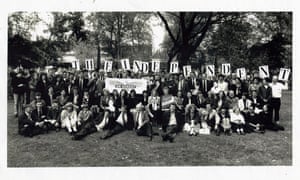Newspapers are still warhorses. But their owners are riding them to the grave
Summary:
The News Chronicle published its last issue on 17 October 1960. To James Cameron it was “the biggest journalistic tragedy for many years … the most meaningful collapse the newspaper business has seen this generation”. The Chronicle had a fine radical tradition and loyal readers served by gifted writers, of whom Cameron was one. Its circulation wasn’t what it had been – neither, come to that, was its radicalism – but it was still selling more than 1.1m copies a day. If it couldn’t survive, Cameron wondered, then what newspaper could, “outside the great chain-stores of the trade?”
Facts:
- The News Chronicle published its last issue on 17 October 1960
- the Daily Sketch first subsumed the Daily Graphic and was itself swallowed up by the Daily Mail in 1971
- The News Chronicle, for example, was born out of the marriage in 1930 between the Daily Chronicle and the Daily News, which itself had absorbed three other newspapers
- the News Chronicle’s final circulation of 1.1m is as many as the Independent, the Guardian, the Times and the Telegraph manage to sell in total today.
Summary:
A truth is dawning on media owners (or in many cases it has dawned, but they don’t like to talk about it). Publishing is over. Obviously this isn’t true in its purest sense; publishing is actually flourishing, just not for publishers. As Facebook last week extended the reach of its instant articles to anyone, as Google invests in making news articles load lightning fast, as virtual reality can be produced by a £200 kit, it is fair to say we have more opportunity today to put out remarkable works of fact and fiction to the world than ever before.However, defining decisions about formats and revenue are dictated at platform level, Facebook and others, or at carrier level, or even, in the case of Apple’s stance against the FBI, at device level.
Facts:
- The mobile advertising market is already effectively owned by Facebook
- China, which is a hostile media market owing to censorship, announce that it would effectively ban any non-Chinese owned media from operating inside the country. India, in a very different way, asserted its own right to choose a separate path for its communications future when it ruled out Facebook’s Free Basics
- Given the disorienting speed of change and a dozen announcements a week that potentially upend your business model, maybe publishing is not in fact dead, but like the proverbial Monty Python parrot, lying on the floor of its cage, eyes screwed tightly shut



